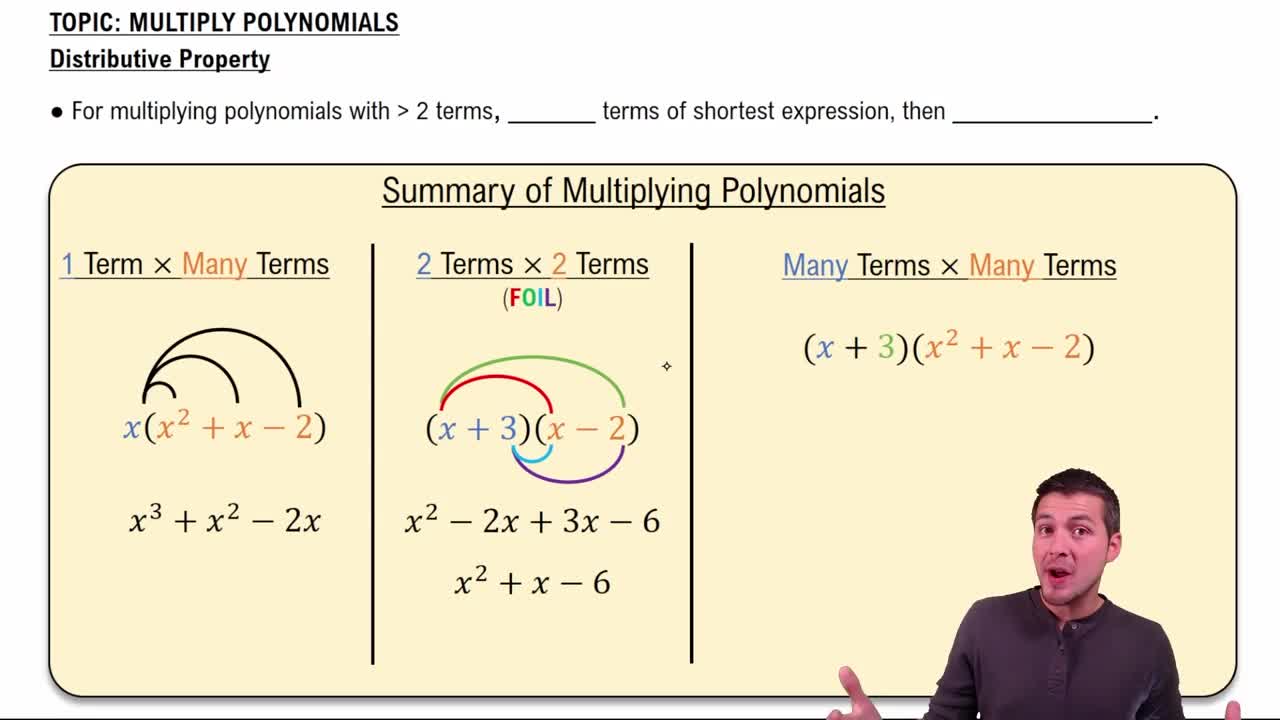Here are the essential concepts you must grasp in order to answer the question correctly.
Exponential Rules
Exponential rules govern how to manipulate expressions involving exponents. Key rules include the power of a product, which states that (ab)^n = a^n * b^n, and the power of a power, which states that (a^m)^n = a^(m*n). Understanding these rules is essential for simplifying expressions like (-2x^4y^3)^3.
Recommended video:
Cramer's Rule - 2 Equations with 2 Unknowns
Negative Exponents
Negative exponents indicate the reciprocal of the base raised to the opposite positive exponent. For example, a^-n = 1/a^n. While this concept is not directly applicable in the given expression, recognizing how negative bases interact with exponents is crucial for broader exponential simplifications.
Recommended video:
Distributive Property
The distributive property allows us to multiply a single term by two or more terms inside parentheses. In the context of exponents, this means applying the exponent to each factor within the parentheses. For the expression (-2x^4y^3)^3, this property helps in distributing the exponent across -2, x^4, and y^3 to simplify the expression effectively.
Recommended video:
Multiply Polynomials Using the Distributive Property
 Verified step by step guidance
Verified step by step guidance Verified video answer for a similar problem:
Verified video answer for a similar problem:



 7:39m
7:39m